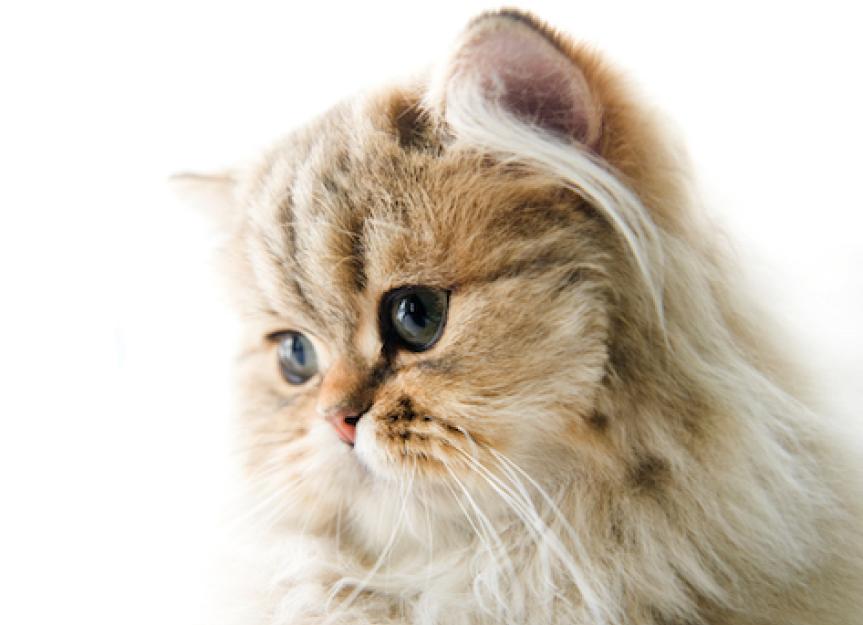The Truth About Teacup Cats
By Helen Anne Travis
无论你叫他们茶杯猫、小矮人、或迷你atures, there’s no denying the cuteness of these fun-size felines. But the breeding practices that go into creating such a small cat could lead to a host of health problems for the pet and a host of heartaches for the pet parent. Here’s what you need to know before spending big bucks on a tiny cat.
What Is a Teacup Cat?
Teacup cats are cats who have been bred to be as small as possible. While most adult cats weigh around 9 to 10 pounds, teacup cats are bred to be about two-thirds that size, says Dr. Jane Brunt, a feline veterinarian at Cat Hospital at Towson in Baltimore, Maryland, and the executive director of The CATalyst Council, a group dedicated to promoting the health, welfare, and value of the companion cat. Some adult teacup cats weigh as little as 5 or 6 pounds, she says.
To make a cat that tiny typically involves mating an undersized male with an undersized female, she says. But not all small cats are created equal. While some animals are naturally petite, others may be stunted in size because of health problems, disease, or undernourishment.
“These cats were born runts for some reason. Something is not quite working in the body,” says Katie Lisnik, director of cat protection and policy at The Humane Society of the United States. “That’s one of our major concerns with breeding for purely physical attributes. It could lead to genetic disorders and health concerns.”
Health Risks for Teacup Cats
Do a Google search for “teacup cats for sale” and you’re likely to find a ton of breeders selling pint-size Persians.
But even at their normal size, the physical attributes that make the Persian breed of cats so cute can also make them more susceptible to certain health problems. “Those problems are even further exacerbated in a smaller cat,” Lisnik says.
For example, breeding a Persian cat’s snub nose to be even shorter can increase his risk of developing chronic respiratory issues, including asthma and breathing difficulties, she says.
Teacup-size Persians are also more likely to suffer from infections in the eye and nose, and jaw issues that affect their ability to properly chew food, Brunt says. As a breed, Persians are also at an increased risk for developing polycystic kidney disease. Making their kidneys even smaller could amplify that risk, she says.
Regardless of pedigree, any cat bred to be teacup-size is more likely to suffer from oral and dental diseases. Teacup cats are also unable to regulate their body temperature as well as their regular-size peers, Brunt says. Their smaller bones and joints also make them more predisposed to arthritis and injury.
Regular exams are important to ensure teacup cats are as healthy as possible, Brunt says.
Finally, Lisnik and Brunt say it is plausible that cats bred to be extra-small might also be extra-stressed, as their stature may limit their stamina and ability to act on predatory urges.
“They will have these instincts to run, jump, climb, and do all of the things a normal cat does,” Lisnik says. “But if their body is not allowing them to exhibit those behaviors, I imagine it would be a big source of frustration.”
Perceived Benefits of Owning a Teacup Cat
When it comes to dogs, some say breeding pups to be extra small may appeal to potential owners who live in condos or apartments with pet-size restrictions. Dog lovers with limited mobility may also be excited about the prospect of owning a teacup-size pet, as well as those who can’t afford the large amounts of food and preventative medicines that a bigger dog may need.
But are there any benefits to owning a teacup cat? “I can’t think of one,” Brunt says.
Normal-size cats are already well-suited to living in small spaces, Lisnik says, and reducing their size doesn’t reduce the amount of care they need. “You’re not getting out of any of the responsibilities of owning a cat,” she says.
As the director of cat protection and policy at The Humane Society, it’s perhaps no surprise that Lisnik is an advocate for adopting a cat from a shelter rather than purchasing one from a breeder.
“Shelters aren’t a great place for cats,” she says. They’re stressful environments, where overcrowding can lead to illness and stress, she explains. Cats are also more cautious by nature, which means they may strike potential adoptees as timid and undesirable. “The majority of animals euthanized in shelters are cats by a large margin.”
从住所不仅可能采用一只猫saves a life, it also saves you a lot of money. While buying a teacup cat can set you back anywhere from $500 to $2,000, many shelters offer low or no-cost adoptions. At shelters, cats are already likely to be spayed or neutered, and sometimes the adoption cost even includes a free vet visit or two. “You’re getting a good deal when you go to the shelter,” Lisnik says.
If you have your heart set on a specific breed, make sure you’re working with an organization that’s reputable to ensure you’re not contributing to a kitten mill or giving money to a breeder who deliberately mates sick animals. Don’t purchase animals off the internet sight unseen, either. Ask to visit the breeding facility and take a look at the breeding animals and how the animals are cared for. Any reputable breeder will happily give you a tour and explain his or her breeding practices.
Taking the time to vet where a cat comes from is better for the animal and his potential owner, Lisnik says. “You’re looking for a companion, not an animal that looks wonderful and healthy as a kitten and then dies of a genetic disorder at age 3 or has chronic health problems.”
Help us make PetMD better
Was this article helpful?
